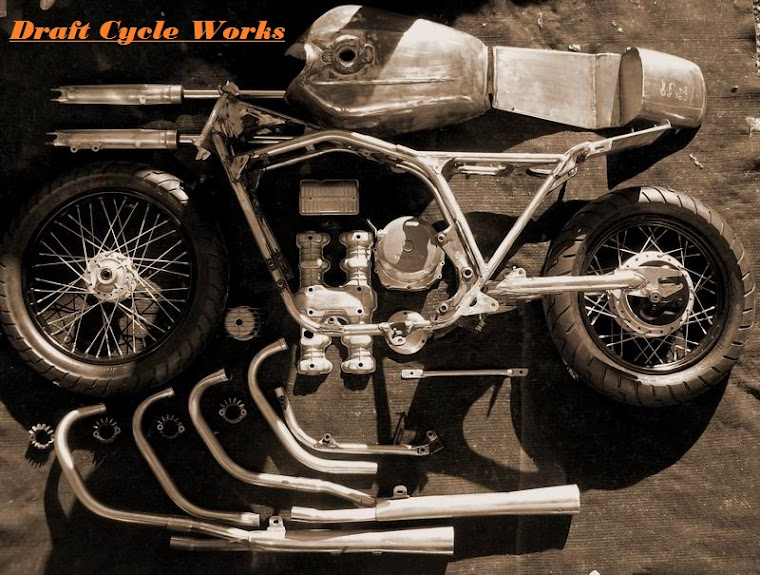Monday, April 27, 2015
Installing Vacuum Ports for Synchronizing
Carburetor Bench Synchronizing: Mikuni VM29 Smoothbore
Complete: Rebuild and reinforcement of the Chianti box
Here's the last few steps for the chianti box.
Made some brass cap nut bolts, repaired some of the wood, glued the corner braces on, drilled and tapped the aluminum insert for the wood mounts, and finally taped and sprayed the interior with bedliner (best not to spray in the dark lest yee like runs in yer paint). It turned out incredibly sturdy and looks quite nice if I do say so myself.
Deglazing a drum brake system
So ever since I built this cl450 front, I've never gotten it to function well. I've deglaze and adjusted it several ties, but I can't seem to find the sweet spot. It's a dual leading shoe system which apparently can be finicky. Another reason I'm taking the brake apart is because I've always heard a clicking sound when rolling the wheel backwards. After inspection it turned out one of the cotter pins had been bent out and was making contact with the wheel hub casting.
For deglazing, I sanded the shoes down with 220 grit perpendicular to the length of the shoe. I also chamfered the leading edge and the side a tiny bit. Just enough to remove the shine. For the drum liner I used 120 grit and a 45* cross hatch.
To adjust the shoes, I set the linkage so both cams were in the same position. I rassembled the drum with the punch marks lined up on the shaft/lever. I then tightened the cable until I heard contact. I expect that this is pretty close to the proper adjustment but I continued to make some minor adjustments.
My thought is that the liner is not perfectly round so I should be able to adjust the cable until I can hear one shoe make contact, then rotate the wheel 180* and make the same sound with the other shoe. This would mean that the shoes are adjusted the same distance away from the drum liner. I hope.
I adjusted the linkage until the sound was similar 180* apart. After dropping the bike back down, it seemed to hold better, but I'll need to ride it to really see if there was an improvement. I'm still waiting on the tins to Com back from paint.
Saturday, April 25, 2015
515 moto swap meet!
Fun times! And coming back with two more bikes. Little 250's. CCW "The Heist". How often do you find a production chopper thst gets 80mpg.
They're going to be little tinker toys for my Dad.
Friday, April 24, 2015
Reinforcing the Chianti Box for the Last Time
This box has been on the back of my bike for 3 years, taken a fair share of abuse, and held up for the most part. I'm finally getting around to making an aluminum insert so the wood is not structural. I love the functionality of the box and for some reason I like the way it looks.
The aluminum interior is 1/8 5052, hastily mig welded together. I colored some stainless blocks using a hotplate and will use them to clamp the wood to the interior box. Eventually I may add a lid and some small tie downs, but fr now I want to see if I can get by without adding any clutter.
The bike tins are out getting a fresh coat of paint so it's now just sitting naked and cold with time to tie up loose ends.








































